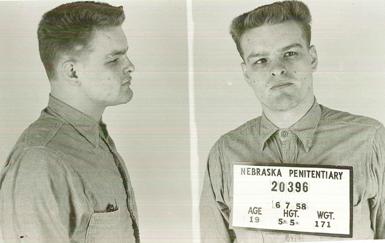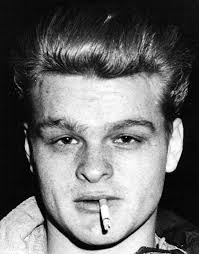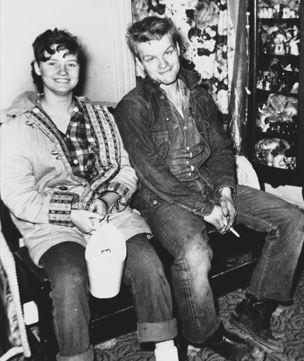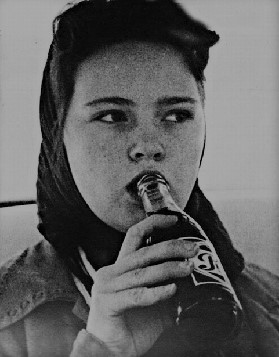
1938 - 1959
Charles Raymond Starkweather
Summary
Name:
Charles Raymond StarkweatherYears Active:
1957 - 1958Birth:
November 24, 1938Status:
ExecutedClass:
Serial KillerVictims:
11Method:
Shooting / StabbingDeath:
June 25, 1959Nationality:
USA
1938 - 1959
Charles Raymond Starkweather
Summary: Serial Killer
Name:
Charles Raymond StarkweatherStatus:
ExecutedVictims:
11Method:
Shooting / StabbingNationality:
USABirth:
November 24, 1938Death:
June 25, 1959Years Active:
1957 - 1958bio
During his school years, Charles faced significant challenges. He was born with a condition that made his legs misshapen, and he also had a speech impediment. These physical challenges made him a target for teasing at school, although his elementary teacher remembered things differently. Despite these hardships, Charles found a way to excel in physical education, where he could channel his anger and frustration into sports.

As Charles grew older, his experiences of being bullied transformed him into a bully himself. He began to harbor deep resentment towards those he perceived as better off. This bitterness was reflected in his shifting behavior—from a well-behaved teenager to a troubled individual. His high school friend Bob von Busch noted Charles's dual nature: he could be incredibly kind and fun but also cruel and vindictive. By the time he dropped out of school, even his family was wary of his violent outbursts.
At eighteen, Charles met thirteen-year-old Caril Ann Fugate, marking a significant turn in his life. He left high school and took a job at a newspaper warehouse, strategically chosen for its proximity to Caril's school. Their relationship led to a series of reckless decisions, including Caril crashing Charles's father's car, which resulted in Charles being kicked out of his home. He then worked as a garbage collector, a job he soon left as he spiraled into a nihilistic worldview. Charles began to believe that life was about surviving and gaining power over others, adopting a grim outlook that culminated in plotting bank robberies and embracing a philosophy where “Dead people are all on the same level.”
murder story
On the night of November 30, 1957, a heated confrontation erupted at a service station in Lincoln, Nebraska. Charles Starkweather, driven by rage, argued with the attendant, Robert Colvert, over buying a stuffed animal on credit. Repeatedly returning to buy minor items, Starkweather's frustration reached a breaking point. He eventually brandished a shotgun, compelling Colvert to hand over $100 from the register. The situation escalated as Starkweather abducted Colvert, drove him to a secluded area, and after a struggle, fatally shot him multiple times in the head.
The violence escalated on January 21, 1958. Starkweather arrived at his girlfriend Caril Ann Fugate's home, only to be turned away by her mother and stepfather. Undeterred and violent, he shot them both and then brutally killed their two-year-old daughter.

He concealed their bodies around the property. When Caril returned home, Starkweather manipulated her with a lie—her family was held hostage, and their safety depended on her cooperation. They remained in the home until the police, alerted by Caril's grandmother, arrived to find them gone.
Starkweather's murderous spree continued as they visited the home of family friend August Meyer in Bennet, Nebraska. Starkweather killed Meyer with a shotgun and also Meyer's dog. As they fled, their car became stuck, leading them to hitch a ride with two teenagers. In a grim turn, Starkweather killed both teens after a failed assault attempt. He later shifted the blame to Fugate, though she claimed to have remained in the car.

Their final acts of violence occurred in a wealthy Lincoln neighborhood. After killing the family maid, Starkweather awaited the return of homeowners Chester and Clara Ward. Upon their arrival, he murdered both, staging the home to delay discovery. The couple then fled with stolen items, marking the peak of a terror spree that had gripped Nebraska.
After a frantic manhunt, Starkweather was captured in Wyoming following a dramatic car chase. Back in Nebraska, despite initial claims of Fugate's ignorance of the crimes, Starkweather admitted she was complicit. Fugate contended she had been coerced under threat against her family. Starkweather faced justice swiftly; convicted of murder, he was executed in 1959. Fugate, convicted as an accomplice, was paroled in 1976 after serving nearly eighteen years, continuing to claim her innocence.